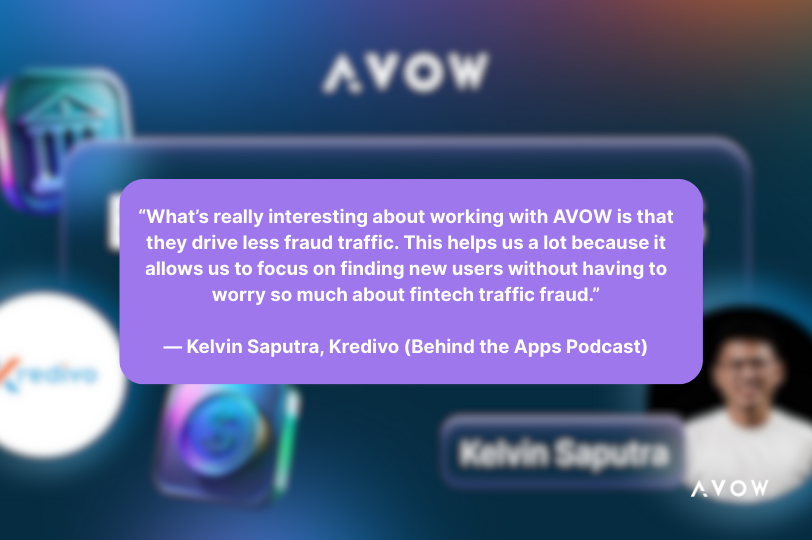Fake installs and bot traffic are quietly draining your UA spend. Discover how to stop the loss—and scale with real users.
The Costly Impact of Fintech Traffic Fraud on Marketing
$88 billion. That’s how much digital advertising fraud, including fraud in fintech marketing, cost marketers globally in 2023, with losses expected to reach $172 billion by 2028 (Statista). AppsFlyer reports that 15% of global mobile media spend is wasted on fraud, including fintech traffic fraud—lost to click fraud, bot-driven installs, and invalid traffic before ads even reach real users (AppsFlyer).
Fraudulent traffic is a silent budget killer. Without effective bot detection and prevention tailored to the realities of fintech, marketers risk optimizing campaigns based on fake data—leading to inflated CPAs, wasted spend, and poor decision-making. Ad networks often amplify the issue by aggregating traffic from multiple sources, many of which are unverified.
The result? Fintech startups burn through acquisition budgets without achieving real user growth, while fraudsters thrive on broken attribution models and lack of transparency in user acquisition.

Fintech Traffic Fraud and The Illusion of Campaign Success
Ad fraud, particularly in fintech, doesn’t just waste money—it warps the very metrics marketers depend on. Every fake install or click, a common occurrence in performance fraud, inflates CPAs and skews LTV, making it harder to scale effectively.
Aggregated traffic from broad networks often brings in low-quality or incentivized installs, fueling these distortions. Fraudsters exploit this complexity through domain spoofing, ad stacking, and click injection, distorting user acquisition performance across fintech campaigns (Fraud Protection Platform).
“Ad fraud is never going away. But it doesn’t have to define your results—marketers just need to take the right steps to spot it and stop it, especially fintech traffic fraud.”
— Charles Manning, CEO, Kochava (Forbes)
For fintech brands, the stakes are higher. Fraudulent data undermines investor trust and skews growth forecasts—risking more than just campaign performance.

Fintech Traffic Fraud: Jeopardizing Your App’s Reputation
Fraud, especially in fintech, can reach beyond installs and into your app’s integrity. In 2024, a trojan named Necro loader infected over 11 million devices worldwide via malicious ad SDKs. It could launch invisible ads, execute code remotely, and sign up users for paid services—without consen (Kaspersky).
The source? An unverified ad integration used by two high-profile apps on Google Play, highlighting the dangers of fintech traffic fraud from unverified sources. Both were removed after mass infections, but the damage—to user trust and developer reputation—was already done.
For fintech apps built on trust, fintech traffic fraud isn’t just a performance issue—it’s an existential one.

Real Solutions to Combat Fintech Traffic Fraud
To fight ad fraud effectively, fintech marketers must prioritize clean traffic and transparency. Tools like AppsFlyer offer real-time fraud detection, filtering out invalid traffic before it can distort campaign performance.
But detection is only half the solution. Where your ads appear matters just as much.
“What’s really interesting about working with AVOW is that they drive less fraud traffic. This helps us a lot because it allows us to focus on finding new users without having to worry so much about fintech traffic fraud.”
— Kelvin Saputra, Kredivo (Behind the Apps Podcast)
That’s where AVOW comes in. As a specialist in mobile OEM advertising, we help fintech brands run campaigns across secure, fraud-resistant ecosystems—including Xiaomi, OPPO, and vivo.
Unlike traditional ad networks, these channels enable advertisers to bid directly on the device, removing shady intermediaries and ensuring full transparency and brand safety—critical for fintech apps operating in high-risk environments.
Paired with AVOW’s appographic and behavioral targeting, marketers can reach high-intent users far more likely to convert—whether applying for a loan, funding a wallet, buying crypto, or trading stocks—all while reducing exposure to fraudulent traffic.
👉 Learn how this works in practice by reading the Mobile OEM Advertising Playbook for Fintech Apps.

Real Users, Real Growth: Solving Fintech Traffic Fraud
Fintech ad fraud isn’t just draining budgets—it’s skewing growth, corrupting data, and eroding trust in a sector built on credibility. For marketers in this space, cleaning up traffic isn’t optional—it’s foundational to sustainable growth.
By combining real-time fraud detection with transparent, fraud-resistant channels like mobile OEM advertising, fintech brands can finally focus on acquiring real users—not chasing misleading metrics driven by invalid traffic. And with partners like AVOW helping navigate these ecosystems, it’s easier than ever to reach high-quality users where it really counts—while keeping fraud exposure to a minimum.

Ready to Clean Up Your Traffic?
Download the Fintech App Playbook and discover how AVOW helps fintech brands drive real growth through fraud-resistant, transparent mobile OEM advertising.
What to do next …
About the Author







